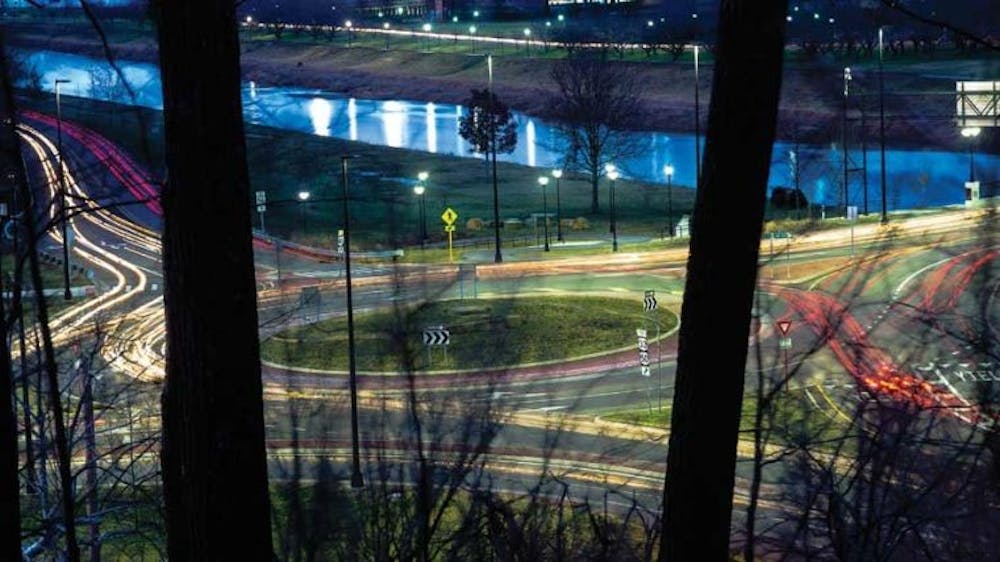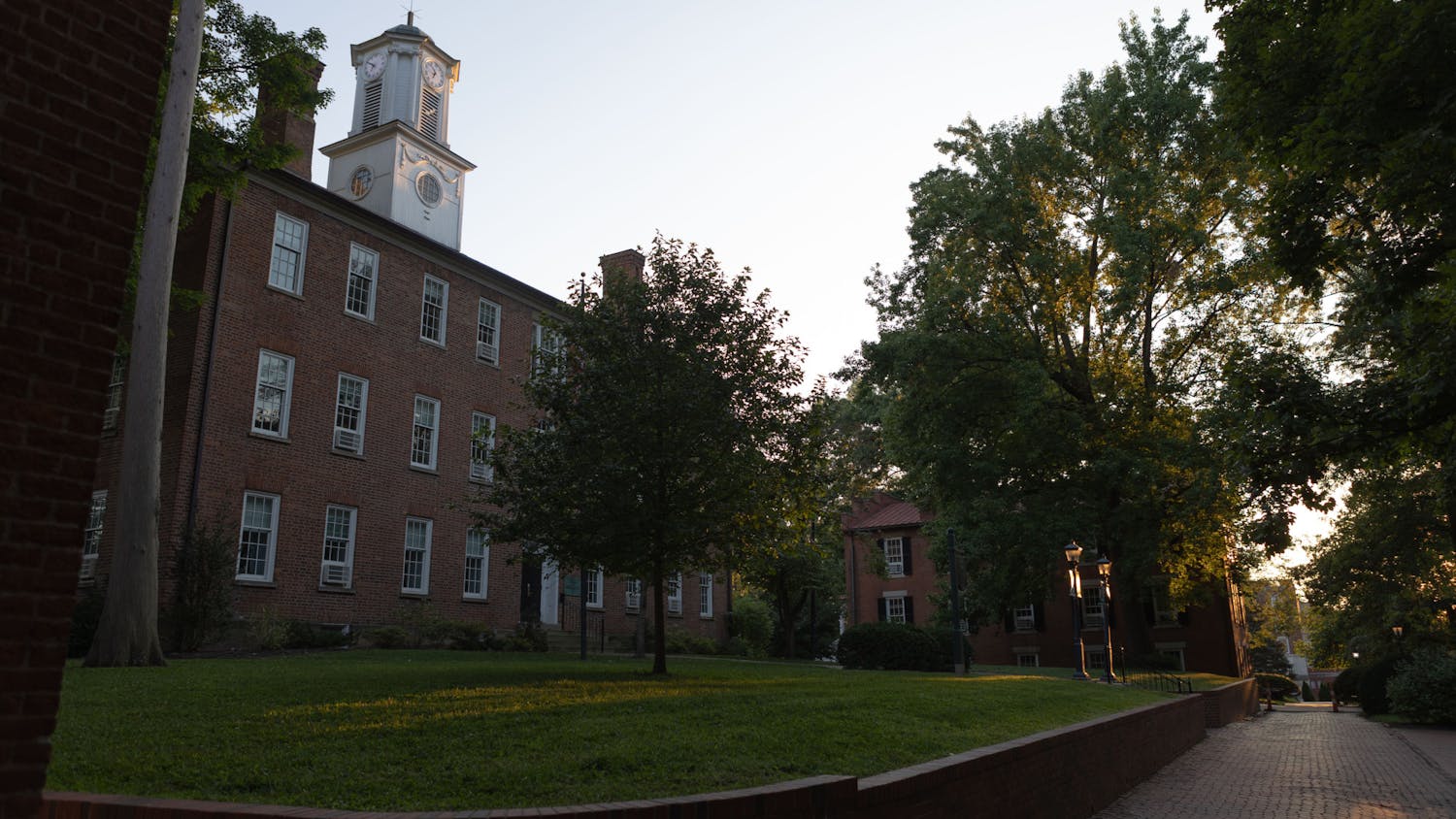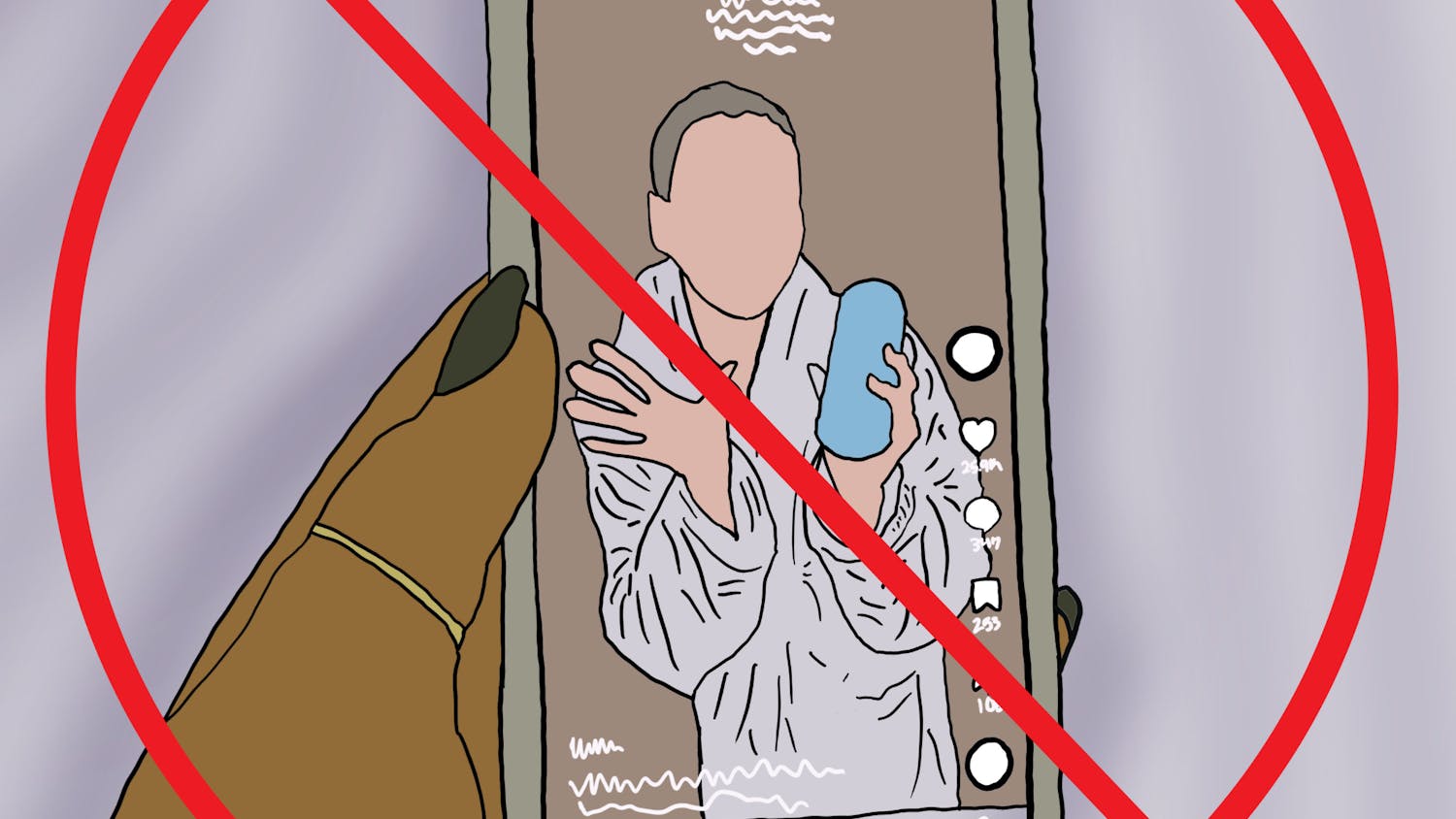Athens’ roundabout has been operating for more than two years now, but the city’s residents haven’t quite gotten used to it.
Since the roundabout opened in August 2010, the number of accidents at the intersection has increased drastically — but the severity of the crashes has dropped, leading to fewer injuries than before the intersection was revamped.
During the 18 months before the Richland Avenue-Rt. 682 intersection closed for construction, Athens Police Department officers responded to 22 accidents. Ten of the crashes resulted in injuries — a rate of 0.45 injuries per crash.
During the 18 months after roundabout opened, there were 38 accidents at the intersection, but just six resulted in injuries, a rate of 0.16 injuries per crash.
Gene Russell, a professor at Kansas State University and chair of the Transportation Research Board’s Roundabouts Committee, said that though such an increase in crashes is not typical, it does happen.
“There is a learning curve when the first two or three (roundabouts) go into an area,” he said.
Athens officials agreed that the city’s residents went through an adjustment period with the new traffic pattern.
“Initially, many of them expressed displeasure and irrational fear with the roundabout,” said Councilman Kent Butler, D-1st Ward. “Now, they express joy, pleasure and satisfaction.”
But data provided by the APD show the adjustment period might still be dragging on. From February through November last year, a nine-month period, there were 16 crashes at the roundabout, three of which resulted in injuries — a rate of 0.19 injuries per crash, higher than the rate during the 18 months immediately following the roundabout’s opening.
The roundabout can be tricky for people who have never driven on one before, Athens Service-Safety Director Paula Horan-Moseley said.
“We’ve heard a lot, ‘I didn’t know what ‘yield’ meant,’ ” she said.
Russell said one common reason for a high rate of crashes at roundabouts is incorrect markings, but Horan-Moseley said that’s not the case here, as the roundabout is “absolutely signed correctly.”
“We’re probably past the learning curve, but we also have people coming in every year who are new to the community,” Horan-Moseley said.
As people get used to roundabouts, though, the crash rate should go down, she said.
Athens City Council approved the $4.85 million roundabout project in October 2009 because the intersection was ranked 78th on an Ohio Department of Transportation list of the state’s dangerous intersections, according to an informational video produced by the city. Construction began in April 2010 and was completed in August 2010.
Roundabouts prevent serious accidents because they slow traffic down but still allow cars to pass through the intersection efficiently. The most common types of accidents on roundabouts are minor ones such as rear-ends and sideswipes during lane changes, Russell said.
According to a 2007 Transportation Research Board report, U.S. conventional four-way intersections that were replaced with roundabouts saw, on average, a 76 percent drop in crashes resulting in injury and a 35 percent reduction in all crashes.
Though the rate of accidents has climbed at Athens’ roundabout, city officials agreed the intersection is safer in its current configuration.
“The injury accidents have dropped,” Horan-Moseley said. “… I love our roundabout.”
jf250409@ohiou.edu






